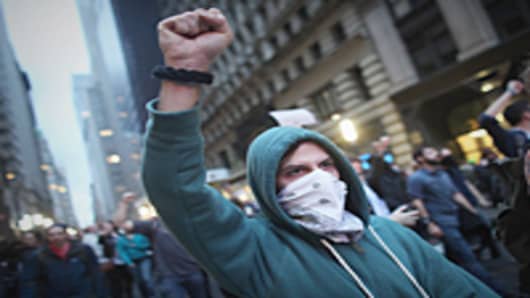There’s also a popular conception that there’s something new about the 1 Percenters controlling a large portion of the nation’s wealth. This, too, is not so.
In 1922, 1 Percenters controlled 36.7 percent of the nation’s wealth, and that number jumped to 44.2 percent by the time the stock market crashed in 1929. The total hit a low of 19.9 percent in 1976 but has been on a steady uptrend since. In fact, there is a pretty direct correlation between the fortunes of the stock market and the amount of wealth the 1 Percenters control.
The stock market-wealth control, though, leads also to why the 1 Percenters have found themselves under such scrutiny.
From Manufacturers to Financiers
Before the market crashed again with the onset of the financial crisis in 2008, 1 Percenters owned 38.3 percent of stocks, while the top 20 percent controlled fully 91 percent of the stock market. Nine in 10 1 Percenter households held more than $10,000 worth of stock.
There’s more.
While the percentages of wealth controlled by the top of the top hasn’t changed much over a long historical spectrum, it has intensified over the past 30 years, which coincided with America’s change from manufacturing leader to financial services powerhouse.
Over that time, according to Dumhoff, 42 percent of wealth created from 1983 to 2004 went to the 1 percenters. The bottom 80 percent received just 6 percent of the new wealth.
Dumhoff’s study is filled with fascinating facts as well as the occasional dose of incendiary political rhetoric. He labels those who want to eliminate the estate tax as “ultra-conservatives,” a term he uses at least four times. Otherwise, though, it is a sobering study of American disparity.
“Since financial wealth is what counts as far as the control of income-producing assets, we can say that just 10 percent of the people own the United States of America,” Dumhoff writes.
It’s About More Than Income and Wealth






